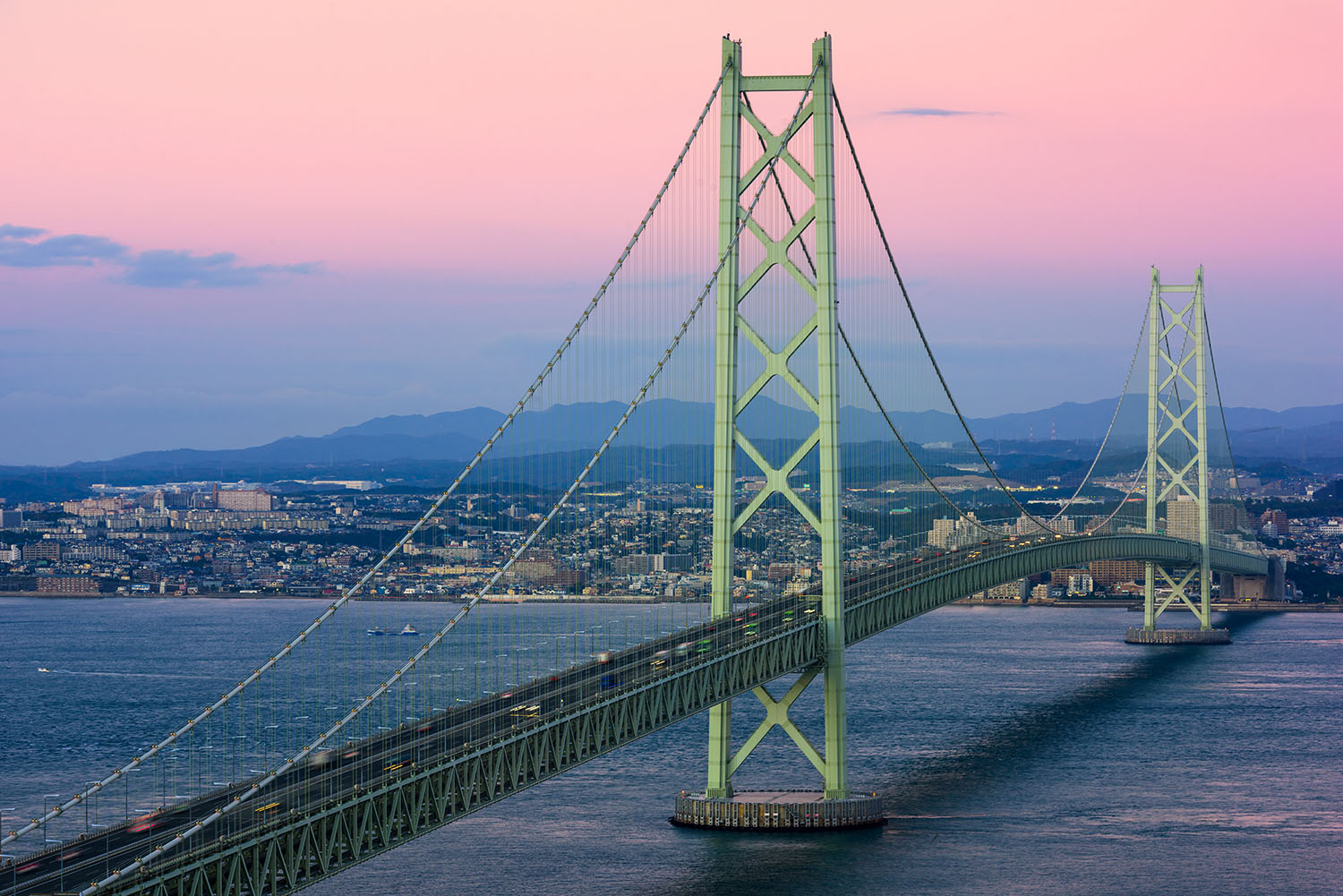

MASTER'S BOOK
AKASHI KAIKYO PEARL BRIDGE – WORLD’S LARGEST SUSPENSION BRIDGE
Large bridge over the Akashi strait
The Akashi Kaikyo Bridge, or literally the “large bridge over the Akashi strait,” connects Kobe – a city on the Japanese Honsiu island – with the Awaji island, situated in the western part of the Seto Inland Sea. Awaji is situated between two islands – Honsiu and Sikoku – so the bridge is an important element of one of Japan’s major transportation routes. Its construction was not only to expedite and speed up the transport between the islands but also to prevent the dangerous sea collisions, such as the catastrophe of two ferries with a few hundred fatalities in the 1950s.
Natural quality control
The design works for the Akashi Bridge commenced in 1986, but the official opening took place as late as in 1998. During the construction, the bridge underwent a natural stress test. In 1995 Kobe suffered an earthquake with the epicentre right under the already commenced structure. The bridge passed the test successfully. Minor repairs and modifications delayed the works only by one month, which was not a major problem in the perspective of the whole project. But the stability and resistance of the bridge was confirmed.
Triple record breaker
The 3911 m long bridge was entered in the Guinness World Records as the longest suspension bridge in the world. But it is not the only record broken by Akashi Kaikyo. It is also the largest and… the most expensive bridge in the history of architecture. Its absolute height is 298.3 m, and the total construction cost is estimated to be around 4 billion dollars. Some sources say that it might have been even 5 billion dollars. So no wonder that the Pearl Bridge is the national pride, enchanting the tourists that visit Japan.
Shining like a pearl
Although the cost of building the bridge can be compared to the value of precious pearls, the informal name of Akashi Kaikyo comes from more romantic values. Every night the structure bewitches the inhabitants of the islands and the mesmerised tourists with a multicolour illumination extending along the steel spans. The lines hanging from the pylons, towers and fasteners are decorated with almost 1800 lamps, which illuminate the solid structure like pearls around the neck. The illumination of the Pearl Bridge changes depending on the season, dynamically shimmering at specific hours and taking special colours on public holidays and celebrations.
Despite its robust structure, the endurance of which was verified even before the end of construction works, Akashi Kaikyo looks incredibly light and delicate. Due to the special lighting which changes steel lines to luminous chains after dark, the large solid bridge, travelled daily by even 23,000 cars, uniquely enriches the local landscape of the inland cities.























